![]()
Contents: #4 Be, #5 B, #9 F, #11 Na, #13 Al, #14 Si, #19 K, #20 Ca, #40 Zr, #42 Mo, #56 Ba, #62 Sm, #64 Gd 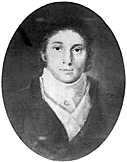
![]()
Contents: #4 Be, #5 B, #9 F, #11 Na, #13 Al, #14 Si, #19 K, #20 Ca, #40 Zr, #42 Mo, #56 Ba, #62 Sm, #64 Gd 
In the early seventeenth century an Italian cobler, Vincenzo Casciarolo, found that glittering stones found near Bologna formed what became known as Bologna stone or phosphorus when heated red hot with a combustible substance. These rather dense stones would glow in the dark after long exposure to the sun or other bright light. In 1774 while investigating pryolusite, a substance long used in the manufacture of glass, Carl W. Scheele (at left), noticed embedded small crystals. Scheele found these contained a new alkalie which gave white precipitates with sulfuric acid and vitriols. Scheele called the earth Schwerspatherde meaning the earth of heavy spar. Having a relatively high density of 4.5 g/cm3, the mineral (BaSO4) became known as baryte and the alkalie baryta after the (Greek) barys meaning heavy. Scheele wrote and sent a sample to his fellow Swede J.G. Gahn who had also investigated pryolusite, asking if he had noticed them. Gahn investigated and found the substance had the same composition as Bologna stone. Metallic Barium (Ba = #56) was first prepared by Humphry Davy in 1808.
Before 1600, soft black minerals (graphite, Sb2S3, PbS, MoS2) that leave black marks were all called molybdos, molybdän, or molybdenum. In 1754 Bengt Qvist investigated a molybdenite mineral from Bispberg and found that when muffled gave off dense black fumes and sulfurous odor, leaving glistening white crystals. Eliminating Lead as an ingredient, he concluded molybdenite contained something metallic. Carl Scheele thought molybdaena (MoS2) somewhat peculiar, collected samples, and in 1778 ground a mixture he made with potassium sulfate, then washed his grinding agent away. Unlike graphite, the powdered molybdaena decomposed with nitric acid to an acidic white powder. He then requested a friend to reduce the powder by strongly heating with a paste of charcoal and linseed oil. Scheele called the metal that formed Molybdenum (Mo = #42) since Molybdos was Greek for lead.
 A turreted castle caps St. Michael's Mount sticking out of the Bay on the Cornwall coast of England. Humphry Davy (1778-1829 below left) was born in Penzance overlooking the Mount in 1778. Early in life Davy gained the knack of telling stories. After his formal schooling ended at age 15, he apprenticed to a surgeon and apothecary in Penzance and two years later began a study of Laviosier's Elements of Chemistry. He used wine glasses and tobacco pipes as apparatus to study mineral acids and alkalies. At 20 he became superintendent of a new institution for studying the medicinal value of gases. At 22 Count Rumford obtained for Davy the position of laboratory director and lecturer's assistant at the Royal Institution in London where he remained 11 years until retiring upon his marriage. Davy's story telling skills made his presentations delightful to the crowd he attracted. When he heard of Volta's new electrical pile, Davy constructed his own pile, and almost immediately observed bubbles produced in a drop of water placed on the top of the pile to improve the electrical connection. While Hydrogen and Oxygen had previously been discovered, Volta's pile provided a new tool for separating earths. Laviosier had earlier noted that:
A turreted castle caps St. Michael's Mount sticking out of the Bay on the Cornwall coast of England. Humphry Davy (1778-1829 below left) was born in Penzance overlooking the Mount in 1778. Early in life Davy gained the knack of telling stories. After his formal schooling ended at age 15, he apprenticed to a surgeon and apothecary in Penzance and two years later began a study of Laviosier's Elements of Chemistry. He used wine glasses and tobacco pipes as apparatus to study mineral acids and alkalies. At 20 he became superintendent of a new institution for studying the medicinal value of gases. At 22 Count Rumford obtained for Davy the position of laboratory director and lecturer's assistant at the Royal Institution in London where he remained 11 years until retiring upon his marriage. Davy's story telling skills made his presentations delightful to the crowd he attracted. When he heard of Volta's new electrical pile, Davy constructed his own pile, and almost immediately observed bubbles produced in a drop of water placed on the top of the pile to improve the electrical connection. While Hydrogen and Oxygen had previously been discovered, Volta's pile provided a new tool for separating earths. Laviosier had earlier noted that: We know only part of the metallic substances which exist in Nature; all those, for example, that have more affinity for Oxygen than for Carbon are not capable of being reduced or brought to the metallic state, and they must not present themselves to our eyes except in the form of oxides, which we do not distinguish from the earths... It is possible, strictly speaking, that all the substances which we call earths may be simply metallic oxides irreducible by the methods we employ.
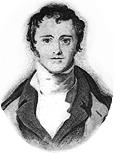
Davy's first attempts to decompose alkali solutions only produced Hydrogen and Oxygen. In 1807 he attempted to separate melted potash, the water soluble extract from wood-ash. The negative wire produced a column of flame while away from air, globules formed that had a high metallic lustre like Mercury. The globules burst into flame when thrown into water, releasing Hydrogen. Because the metal was obtained from potash, (K2CO3) Davy named the element Potassium (K = #19). Potassium is called Kalium in German and Scandinavian languages which derives from al-quali (Arabic) meaning the ash.
A few days later Davy announced the similar isolation of another new metal which he called Sodium (Na = #11): Suwwad (Arabic) is a plant with high soda content (Na2CO3). Sodanum (Medieval Latin) was a headache remedy. Natrium: Neter (Hebrew) and nitrum (Latin) are ancient names for alkalies. From the 1500s, they were called natron in Europe. The -ium denotes a metal.
Davy tried to used Potassium as a reducing agent for lime, baryte, stronite, and magnesia in glass tubes with no clear success. He then tried melting a mixture of potash with the various earths and passing electric current through the mixtures when covered with naphtha. Metal globules formed but did not remain long enough for further analysis. A third attempt of mixing lime and other alkaline earths with mercuric oxide provided trace amount of amalgams. In May 1808 Berzelius wrote to Davy that he and Dr. Pontin, the king's physician, had decomposed both lime and baryta by mixing with mercury and electrolyzing. Davy then mixed moistened earth with 1/3 mercuric oxide by weight, and using a Platinum wire in a puddle of Mercury produced enough amalgam so he could distil away the Mercury and for the first time see the silver-white metal which he called Calcium (Ca = #20): Kylix (Greek) = calx (Latin) means chalk. Calcination (Medieval Latin) is the process of reducing a calx, as when chalk is incinerated to lime:
By July Davy had used the method to isolated Strontium, Barium, and Magnesium.
![]()
Wilhelm Homberg (1652-1715) was born on the island of Java but raised in Europe. In 1702 he used borax, a substance generally thought to be artificially produced, to make a snow white powder he called sedative salt, (boric acid, HBO2). In 1747-8 Théodore Baron de Hénouville (1715-1768) demonstrated that borax is composed of the sedative salt and soda (Na2O).

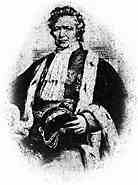 Gay-Lussac and Thenard in France and Davy in England isolated the element within sedative salt in 1808. Louis-Joseph Gay-Lussac (1778-1850 at left) enrolled at 19 at the École Polytechnique where he met Thenard. They became life-long friends and collaborators, and both became Professors there. At 24 Gay-Lussac began a series of high altitude balloon flights to study the chemical composition of the atmosphere and the behavior of a magnetic needle. Louis-Jacques Thenard (1777-1857 at right) was a carpenter's son who was educated by a village priest. Vauquelin helped get Thenard a job. Upon news of Davy's isolation of alkali metals, Napoleon provided a voltaic pile for Gay-Lussac and Thenard. But before it was ready, they produced Potassium without a battery by firing it with metallic Iron. On June 21, 1808, while Gay-Lussac was recovering from an explosion which nearly cost him his sight, they announced their decomposing and recomposing boric acid. They called the new element bore and concluded that the radical should have a place beside carbon, phosphorus, and sulfur. The following year Gay-Lussac proposed that gases combine exclusively in simple volume ratios.
Gay-Lussac and Thenard in France and Davy in England isolated the element within sedative salt in 1808. Louis-Joseph Gay-Lussac (1778-1850 at left) enrolled at 19 at the École Polytechnique where he met Thenard. They became life-long friends and collaborators, and both became Professors there. At 24 Gay-Lussac began a series of high altitude balloon flights to study the chemical composition of the atmosphere and the behavior of a magnetic needle. Louis-Jacques Thenard (1777-1857 at right) was a carpenter's son who was educated by a village priest. Vauquelin helped get Thenard a job. Upon news of Davy's isolation of alkali metals, Napoleon provided a voltaic pile for Gay-Lussac and Thenard. But before it was ready, they produced Potassium without a battery by firing it with metallic Iron. On June 21, 1808, while Gay-Lussac was recovering from an explosion which nearly cost him his sight, they announced their decomposing and recomposing boric acid. They called the new element bore and concluded that the radical should have a place beside carbon, phosphorus, and sulfur. The following year Gay-Lussac proposed that gases combine exclusively in simple volume ratios.
On June 30, 1808 Humphry Davy presented a paper to the Royal Society likewise announcing the discovery of metallic Boron by heating boric acid and Potassium in a Copper tube for 15 minutes. Davy called it boracium. It is now known as Boron (B = #5): Bauraq (Arabic) and burah (Persian) are names for borax, Na2B4O7•10H2O. The suffix -on was added because of the similarity to carbon.
Precious stones such as zircon, jacinth (or hyacinth), and jargon containing Zirconium are widely distributed and known by ancients. But because of its similarity to Alumina, it wasn't until 1789 that Klaproth analyzed a zircon and found it 70% a new element, jargonia (or zirconia). In 1808 Davy failed to decompose zirconia. Berzelius finally obtained the metal in 1824 by heating dry potassium and potassium zirconium fluoride in a very small, closed iron tube inside a platinum crucible. After cooling he placed it in water where fell from the tube a black powder as fast as the salt dissolved.
After washing and drying he found a black powder resembling charcoal, which couldn't be compressed or polished like a metal.
Pure zirconium wasn't obtained until 1914. Zirconium (Zr = #40): Zerk (Arabic) means precious stone. Zirconium is in zircons, ZrSiO4. Zargum (Arabic) means golden yellow colored.
Davy failed to decompose silica using a voltaic pile or by passing Potassium vapor over red-hot silica. Gay-Lussac and Thenard obtained a reddish brown powder after violently reacting silicon tetrafluoride and Potassium. Berzelius persisted to purify the French powder in 1824 obtaining a brown amorphous substance by two different techniques. Silicon (Si = #14): Silex (Latin) is flint, a hard stone. Silicon was identified in flint, SiO2. The suffix -on was added because of its resemblance to Carbon. 
Aluminum (Al = #13): Alumen (Latin) means alum. Alum was the name for K2Al6(OH)12(SO4)4, which in ancient times was used as an astringent. Alum was exported from ancient Greece and Italy. A.S.Marggraf (1709-1782) about 1754 gathered evidence that potash and soda are different, that calamine produces a peculiar metal, Zinc, and that alumina, magnesia, and lime are three distinct earths. Before Laviosier's new definition of element, earths were considered elemental. So Marggraf's distinction was equivalent to the discovery of these elements. But the isolation of reactive metals was far more difficult. Hans Christian Oersted (1777-1851 at right) who in 1820 discovered that an electric current creates a circular magnetic field about a wire, also was the first to produce Aluminum with Mercury impurities in 1825. His claim was nearly lost by publication in an obscure Danish journal, but he encouraged Wöhler to attempt to produce Aluminum.
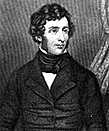 Friedrich Wöhler (1800-1882 at left) was born near Frankfort. In his youth he made Selenium, Cadmium, and Potassium soon after their discovery. He won prizes in mathematics, made paintings and etchings, collected ancient coins, read poetry, continued chemical experiments, and at age 23, received a degree of Doctor of Medicine, Surgery, and Obstetrics, insigni cum laude. When his Professor advised him to relinquish medicine for chemistry, he studied with Berzelius in Stockholm. The two corresponded frequently the rest of Berzelius' life. Like Berzelius, Wöhler became his country's most versatile chemist. He became a chemistry professor at the University of Berlin and later succeeded Stromeyer at Göttingen. Wöhler was unable to reproduce Aluminum by Oersted's method. But in 1827 he isolated Aluminum by firing anhydrous aluminum chloride with Potassium in ceramic crucibles, cooling, and then immersing in water. He was the first to describe Aluminum's properties. He used the same method to prepare Beryllium and Yttrium. Wöhler's synthesis of urea in 1828 revolutionized organic chemistry by implying no vital force was needed.
Friedrich Wöhler (1800-1882 at left) was born near Frankfort. In his youth he made Selenium, Cadmium, and Potassium soon after their discovery. He won prizes in mathematics, made paintings and etchings, collected ancient coins, read poetry, continued chemical experiments, and at age 23, received a degree of Doctor of Medicine, Surgery, and Obstetrics, insigni cum laude. When his Professor advised him to relinquish medicine for chemistry, he studied with Berzelius in Stockholm. The two corresponded frequently the rest of Berzelius' life. Like Berzelius, Wöhler became his country's most versatile chemist. He became a chemistry professor at the University of Berlin and later succeeded Stromeyer at Göttingen. Wöhler was unable to reproduce Aluminum by Oersted's method. But in 1827 he isolated Aluminum by firing anhydrous aluminum chloride with Potassium in ceramic crucibles, cooling, and then immersing in water. He was the first to describe Aluminum's properties. He used the same method to prepare Beryllium and Yttrium. Wöhler's synthesis of urea in 1828 revolutionized organic chemistry by implying no vital force was needed. 
While Aluminum is the most abundant metal on earth, it remained a rare, exotic metal until Charles M. Hall (1863-1914), six months out of Oberlin college, and his sister Julia Brainerd Hall (1859-1925), found in 1886 a way to separate Aluminum by electrolysis using fused cryolite, Na3AlF6, as the solvent in cast-iron crucibles using carbon anodes. (Aluminum cannot be electrolyzed from aqueous solutions because it forms insoluble aluminum hydroxide in water.) They moved from Pittsburgh to Niagara Falls, becoming the first electrochemical company there. In 1907 they renamed their company the Aluminum Company of America (ALCOA).
![]()

M. Klaproth analyzed (results below) a Peruvian emerald generously donated by Prince Gallitzin. Johann Jacob Bindheim and others analyzed Beryl, a very similar gem. René-Just Haüy (1743-1822) was struck particularly by the similar crystal geometry between the two gems. In 1798 Haüy requested Nicolas-Louis Vauquelin (1763-1829 at left) to compare emerald and beryl. His analysis (below) found that both gems were identical except for a little Chromium in emerald. But his analysis also discovered a new earth similar to alumina that had been previously overlooked. But it had solubility differences and refused to form alum. Since its salts had a sweet taste, he called the new earth glucina, meaning sweet.
| silex (silica) |
argil (alumina) |
iron oxide | lime | glucina | |
| Emerald (Klaproth) | 66.25% | 31.25% | 0.50% | - | - |
| Beryl (Bindheim) | 64% | 27% | 2% | 8% | - |
| Emerald=Beryl (Vauquelin) | 64% | 14% | - | 2.56% | 13% |
![]()
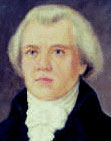 |
| Portrait by permission Dept. Chemistry U. of Turku |
 In 1787 a student of the Swedish chemist Berzelius, Carl Arrhenius, found in the feldspar quarry at Ytterby near Stockholm a dense black rock which he called ytterite. Johan Gadolin (1760-1852 on the coin and portrait to right), the foremost Finnish chemist of his day and professor of chemistry at Åbo/Turku, Finland, in 1794 began an analyzis of the rock. He found 38% of the rock to be a new earth which he called yttria. Later the ore was renamed gadolinite in his honor. During the next century gadolinite and the similar cerite from the Bastnäs mine provided a wealth of rare earth elements.
In 1787 a student of the Swedish chemist Berzelius, Carl Arrhenius, found in the feldspar quarry at Ytterby near Stockholm a dense black rock which he called ytterite. Johan Gadolin (1760-1852 on the coin and portrait to right), the foremost Finnish chemist of his day and professor of chemistry at Åbo/Turku, Finland, in 1794 began an analyzis of the rock. He found 38% of the rock to be a new earth which he called yttria. Later the ore was renamed gadolinite in his honor. During the next century gadolinite and the similar cerite from the Bastnäs mine provided a wealth of rare earth elements.
 In 1847 a similar dense, black mineral with high luster was discovered near Miask in the Southern Ural Mountains of Russia. The mineral was named samarskite for the Chief of Staff of the Russian Corps of Mining Engineers, Vasilii Yefrafovich von Samarski-Bykhovets (1803-1870). Samarskite is found in moderate abundance in granite pegmatites, a slow cooling igneous intrusive rock that tends to include rare earth oxides that are left over materials that other minerals seem to not include in their crystal lattices. The general formula is M2O4 (Some sources list the formula as M3M'5O16) where the ratio of various metals varies: One part of the metal is often a mixture of Nb, Ta, and Ti while the other part is often composed of Fe+3, U, Y, and lesser amounts of rare earth elements. (For example, a sample might have the formula Y0.2REE0.3Fe+30.3U0.2Nb0.8Ta0.2O4 where REE might be La, Ce, Pr, Nd, or Sm.) In 1853 Mariqnac suspected Mosander's earth didymia obtained from the cerite was not pure because its spectra varied. In 1879 Lecoq de Boisbaudran (portrait at left) using samarskite noted that another earth precipitated before didymia when ammonium hydroxide was added. He called this samaria after its mineral source. The name for the element within became Samarium. (Sm = #62)
In 1847 a similar dense, black mineral with high luster was discovered near Miask in the Southern Ural Mountains of Russia. The mineral was named samarskite for the Chief of Staff of the Russian Corps of Mining Engineers, Vasilii Yefrafovich von Samarski-Bykhovets (1803-1870). Samarskite is found in moderate abundance in granite pegmatites, a slow cooling igneous intrusive rock that tends to include rare earth oxides that are left over materials that other minerals seem to not include in their crystal lattices. The general formula is M2O4 (Some sources list the formula as M3M'5O16) where the ratio of various metals varies: One part of the metal is often a mixture of Nb, Ta, and Ti while the other part is often composed of Fe+3, U, Y, and lesser amounts of rare earth elements. (For example, a sample might have the formula Y0.2REE0.3Fe+30.3U0.2Nb0.8Ta0.2O4 where REE might be La, Ce, Pr, Nd, or Sm.) In 1853 Mariqnac suspected Mosander's earth didymia obtained from the cerite was not pure because its spectra varied. In 1879 Lecoq de Boisbaudran (portrait at left) using samarskite noted that another earth precipitated before didymia when ammonium hydroxide was added. He called this samaria after its mineral source. The name for the element within became Samarium. (Sm = #62)
In 1886 Boisbaudran found another earth which turned out identical to an earth found in 1880 by Marignac. Marignac agreed with Boisbaudran's proposal to call the earth gadolinia after the mineral gadolinite which, as noted above, had been named for Johan Gadolin who first began the analysis of this type of mineral. The element within is called Gadolinium (Gd = #64). (Read Sir Johan Gadolin of Turku: The Grandfather of Gadolinium by Peter and Kirsti Dean, also of Turku. View images of Gadolin they have collected.)
![]()
Fluere (Latin) means to flow. Georgius Agricola in 1529 described how fluor lapis (fluorspar = CaF2) being easily melted, was used as a flux to lower the melting temperatures of ores in smelting. But isolating the element within proved to be the most difficult and most hazardous of all the elements named for minerals. Several chemists lost their lives, others lived shortened lives, and many experienced great pain as a result of their attempts to isolate the element. In 1676 it was noted that if flux from mines is heated on a metal plate, it shines with a bluish-white lustre. About the same time a glass cutter noted that after heating this mineral with strong acids, glass becomes etched. In 1771 Scheele found that heating green or white fluorspar with oil of vitriol (sulfuric acid, H2SO4) produced an acid (HF) that dissolves glass and siliceous earth. Antoine Lavoisier thought that all acids contain Oxygen but Humphry Davy showed that this acid does not. André-Marie Ampère (1775-1836) proposed to Davy that the acid must be a compound of Hydrogen and a new element. Davy, Gay-Lussac, and Thenard all suffered intensely from inhaling small amounts of the acid vapors. George Knox and his brother, the Reverend Thomas Knox made an apparatus with fluorspar. The Reverend nearly lost his life and George had to rest three years to regain his health. P.Louyet of Brussels, (1818-1850) aware of the Knox brothers' misfortune, continued and died as did Jérôme Nicklès of Nancy. Edmond Fremy (1814-1894) watched some of Louyet's experiments and tried to electrolyze anhydrous fluorspar but the gas produced at the anode immediately reacted.  In 1886 Ferdinand-Frédéric-Henri Moissan, (1852-1907 at right), who had studied under Fremy, successfully used Platinum-Iridium electrodes in a Platinum U-tube to electrolyze dry potassium acid fluoride in anhydrous liquid hydrogen fluoride. Finally Fluorine (F = #9) had been produced. Moissan had been born in Paris and received his first chemistry instruction from his father, a railroad official. At age 18 he became an apothecary apprentice, but at 20 he gave up the position to study under Fremy. In 1879 he passed the examination to become a pharmacist, but three years later married Léonie Lucan whose father supported his daughter's family so the couple could spend full time doing science. In 1893 Moissan produced the first artificial diamonds by subjecting charcoal to enormous pressure. Moissan developed an electric furnace in which he prepared many uncommon metals: Uranium, Tungsten, Vanadium, Chromium, Manganese, Titanium, Molybdenum, Columbium, Tantalum, and Thorium. He insisted on extreme neatness in his laboratory. Moissan delivered polished scientific lecturers that attracted crowds at the Sorbonne.
In 1886 Ferdinand-Frédéric-Henri Moissan, (1852-1907 at right), who had studied under Fremy, successfully used Platinum-Iridium electrodes in a Platinum U-tube to electrolyze dry potassium acid fluoride in anhydrous liquid hydrogen fluoride. Finally Fluorine (F = #9) had been produced. Moissan had been born in Paris and received his first chemistry instruction from his father, a railroad official. At age 18 he became an apothecary apprentice, but at 20 he gave up the position to study under Fremy. In 1879 he passed the examination to become a pharmacist, but three years later married Léonie Lucan whose father supported his daughter's family so the couple could spend full time doing science. In 1893 Moissan produced the first artificial diamonds by subjecting charcoal to enormous pressure. Moissan developed an electric furnace in which he prepared many uncommon metals: Uranium, Tungsten, Vanadium, Chromium, Manganese, Titanium, Molybdenum, Columbium, Tantalum, and Thorium. He insisted on extreme neatness in his laboratory. Moissan delivered polished scientific lecturers that attracted crowds at the Sorbonne.
![]()

| introduction | alchemy | planets | other celestial objects | color | other properties | myths | people | ore mines | other places | combination names |
| to site menu | Introduction to Development of Periodic Chart |
18th Century vocabulary, & index of people |
chemistry | physics | ||||||
| created 31 December 2000, amplified 3 April 2001 latest revision 16 June 2007 |
by D Trapp | |||||||||